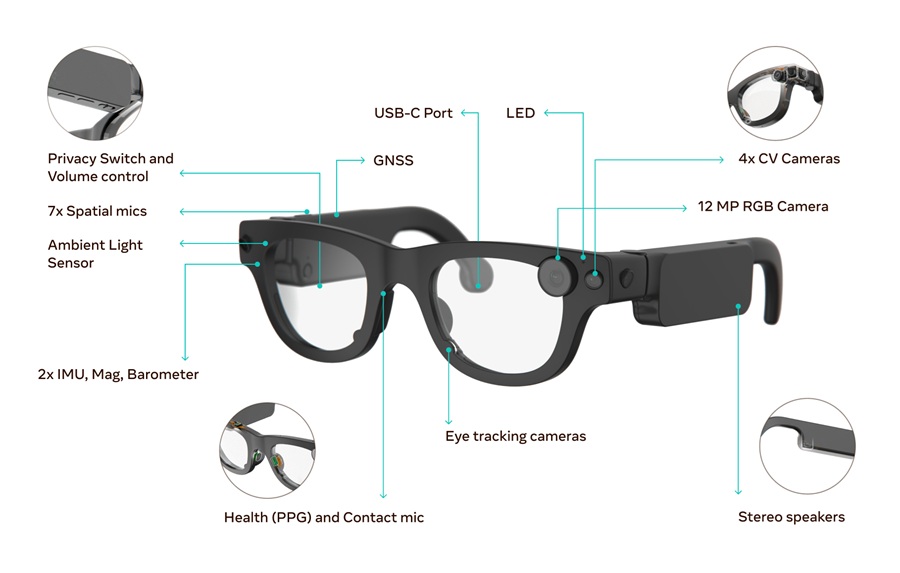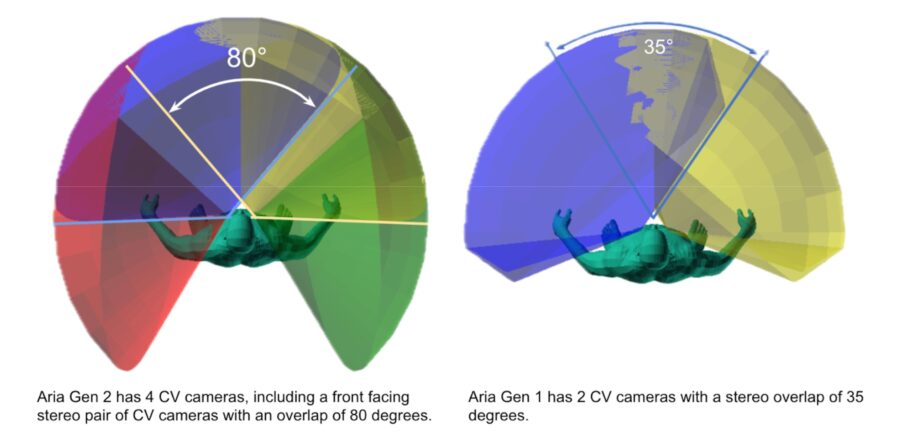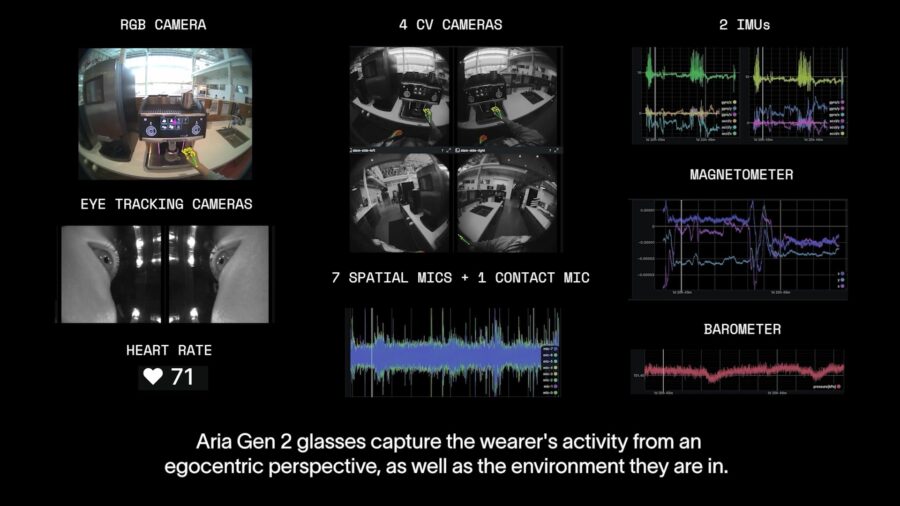
In General XR News
June 6, 2025 – Meta has this week shared detailed technical insights into its latest research glasses, Aria Gen 2.
What is Project Aria?
Project Aria is Meta’s research glasses platform, designed to help academic and industry partners collect data and explore applications in machine perception, AI, and robotics.
This latest generation of the wearable device builds significantly on the previous Aria Gen 1 model, introduced in 2020, showcasing substantial upgrades designed specifically for advanced research applications in machine perception, contextual AI, and robotics.
Refined design for all-day wear
According to Meta, Aria Gen 2 notably enhances wearability through improved comfort, offering eight distinct size variations to better accommodate diverse face shapes. The glasses remain lightweight, ranging from 74 to 76 grams depending on the model size, and feature foldable arms for improved portability and ease of everyday use.

Camera upgrades, enhanced sensors, and improved audio
Camera capabilities have also seen major advancements. Aria Gen 2 integrates four computer vision cameras—twice the number included in Gen 1. These cameras provide a significantly increased stereo overlap of 80°, compared to the previous 35°, allowing for enhanced depth perception and spatial awareness. Additionally, the cameras now include an HDR capability boosted to 120 dB, up from the earlier 70 dB, which Meta stated “allows for superior computer vision tasks across diverse lighting conditions.”

New sensor integrations further augment Aria Gen 2’s capabilities. An Ambient Light Sensor (ALS) enhances exposure control algorithms and is capable of distinguishing between indoor and outdoor lighting conditions through an ultraviolet mode.
For audio, a contact microphone embedded in the nosepad of Aria Gen 2 helps to significantly improve audio capture clarity in noisy environments. Additionally, a photoplethysmography (PPG) sensor, also embedded in the nosepad, enables real-time heart rate estimation.

Smarter spatial awareness and real-time perception
Another technical advancement introduced in Aria Gen 2 is precise device time alignment using SubGHz radio technology. This onboard solution delivers sub-millisecond accuracy, allowing researchers to capture more accurate time-synchronized data between multiple Project Aria glasses.
Meta stated that on-device machine perception (MP) capabilities have also been significantly upgraded. Aria Gen 2 integrates advanced Visual Inertial Odometry (VIO) for spatial navigation, sophisticated eye-tracking to capture detailed gaze data, and enhanced 3D hand tracking, enabling precise hand-joint positioning for accurate annotations and use with applications such as dexterous robot hand manipulation that require high precision.
Meta stated that applications to collaborate using Aria Gen 2 will open later this year. Researchers interested in the technology can join the Aria Gen 2 interest list, while applications for the company’s Aria Research Kit with Aria Gen 1 glasses are still being accepted on a rolling basis.
Meta will be demonstrating Aria Gen 2 glasses through interactive demos at CVPR 2025 from June 11 in Nashville, Tennessee. To read the full announcement from Meta, click here.
Image credit: Meta
About the author
Sam is the Founder and Managing Editor of Auganix. With a background in research and report writing, he has been covering XR industry news for the past seven years.
